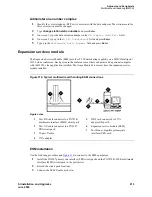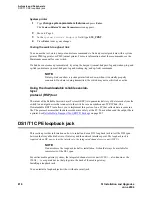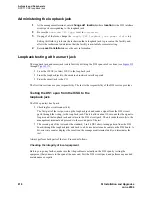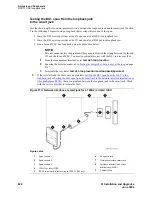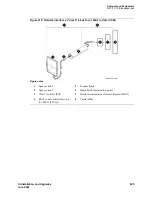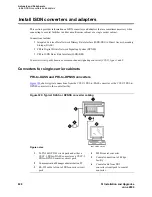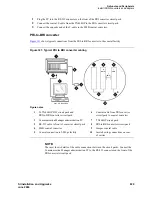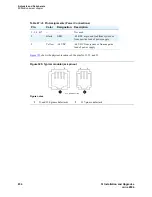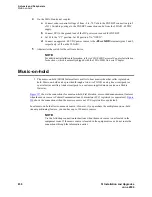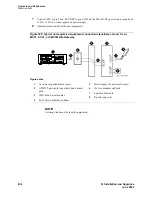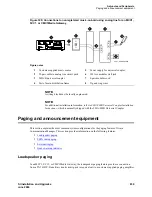
Adjuncts and Peripherals
DS1/T1 CPE loopback jack
SI Installation and Upgrades
827
June 2004
Failure of any of the above tests (a, b, or c) indicate a problem in Section 2. This could
mean bad loopback jack -to-”dumb” block cabling, but is more likely to indicate a
problem somewhere between the “dumb” block and the CO. This is the responsibility of
the DS1 service provider.
If the DS1 Span Test confirms that there are no problems in Section 1, the technician
should proceed as follows to avoid unnecessary dispatch.
1
Identify and contact the DS1 service provider.
2
Inform the DS1 provider that loopback tests of the CPE wiring to the “dumb”
block (section 1) showed no problems.
3
If the far-end ICSU line loopback test failed, inform the DS1 provider.
4
Request that the DS1 provider perform a loopback test of their portion of the
Section 2 wiring by sending someone out to loop Section 2 back to the CO at the
“dumb” block.
If this test fails, the problem is in the service provider’s wiring.
If the test passes, the problem is in the cable between the loopback jack and the
“dumb” block. Replace the loopback jack.
Configurations using fiber multiplexers
Use the loopback jack when customer premises DS1 wiring connects to an on-site fiber multiplexer
(MUX) and allows wiring to the network interface point on the MUX to be remotely tested.
Fiber MUXs can take the place of Interface termination feeds as shown in
Figure 315
through
Figure 318
.
Test these spans using the same procedures as metallic spans. Note the following points:
1
Fiber MUXs may have loopback capabilities that can the service provider can activate from the
CO end. These may loop the signal back to the CO or back to the DS1 board. If the MUX
provides the equivalent of a line loopback on the “problem” DS1 facility, activate it after a
successful loopback jack test, and use it to isolate problems to the wiring between the loopback
jack and the MUX.
2
Be aware that there are installations that use repeatered metallic lines between the MUX and the
“dumb” block. These lines require DC power for the repeaters and this DC power is present at the
“dumb” block interface to the CPE equipment. A loopback jack is required in this configuration to
properly isolate and terminate the DC power.
To check for the presence of DC, make the following 4 measurements at the network interface jack:
1
From transmit tip (T, Pin 5) to receive tip (T1, Pin 2)
2
From transmit ring (R, Pin 4) to receive ring (R1, Pin 1)
3
From transmit tip (T, Pin 5) to transmit ring (R, Pin 4)
4
From receive tip (T1, Pin 2) to receive ring (R1, Pin 1)
All measurements should read 0 (zero) volts DC. For pin numbers and pin designations, refer to
Integrated Channel Service Unit (ICSU) Installation and Operation.

